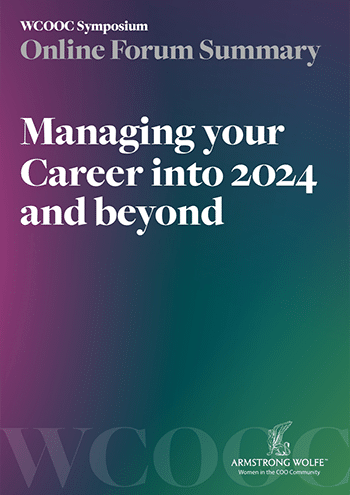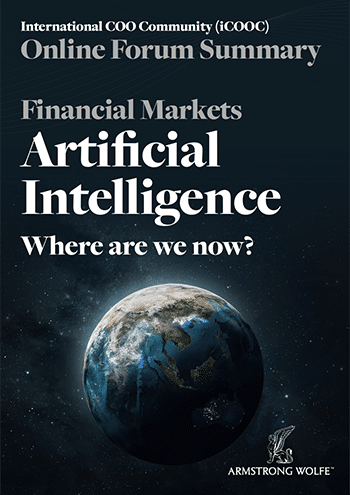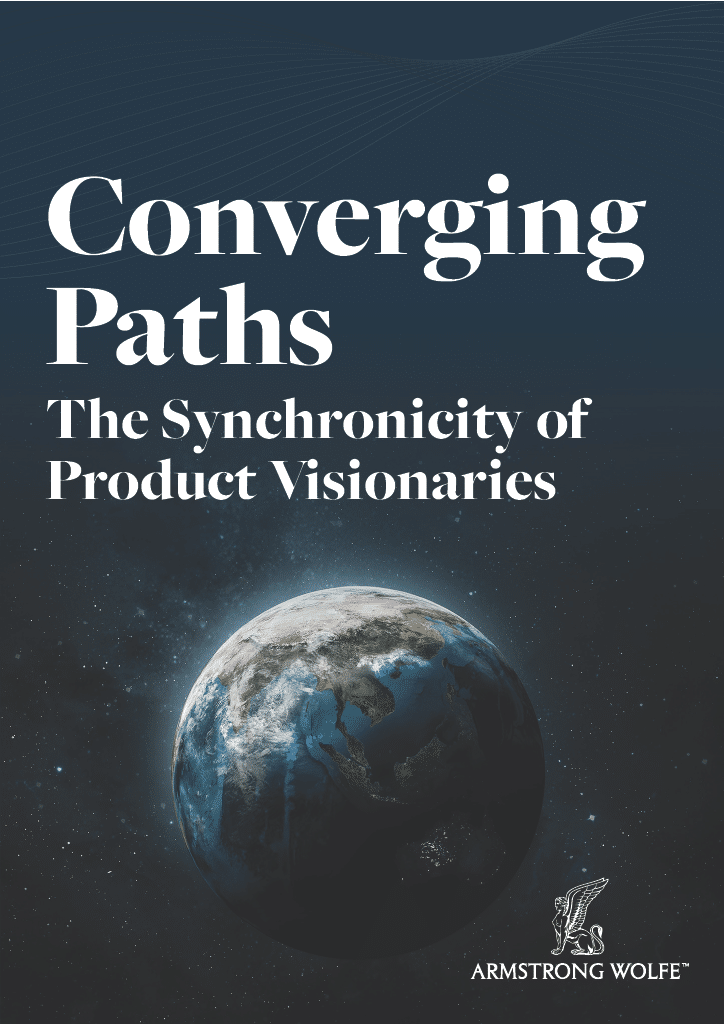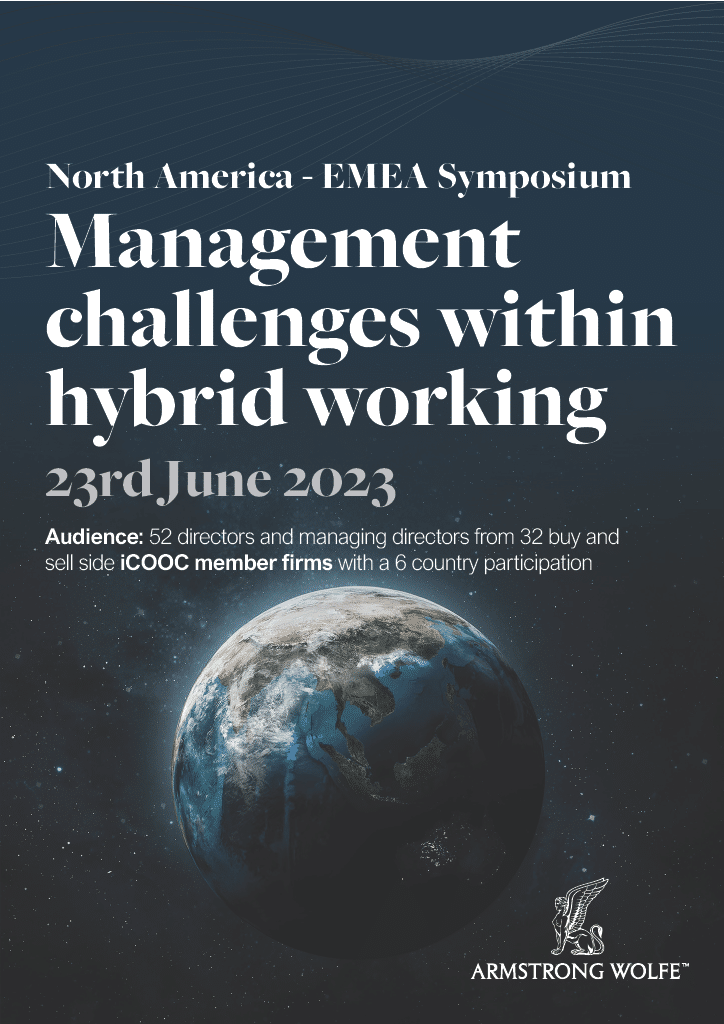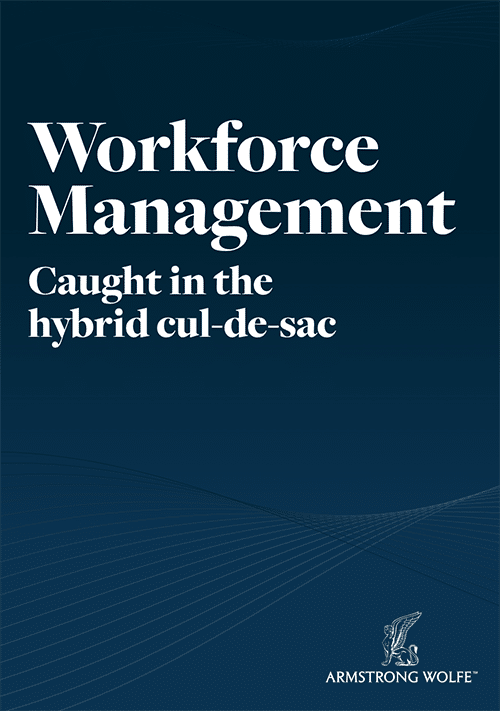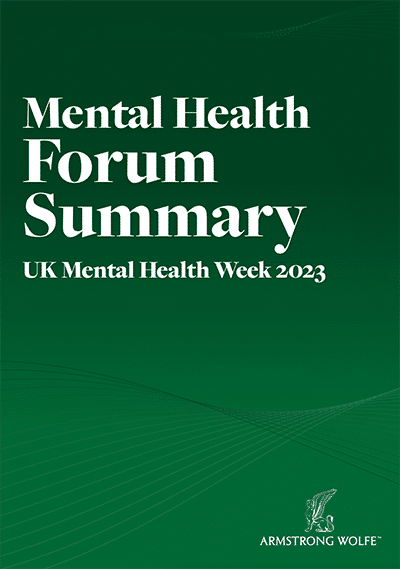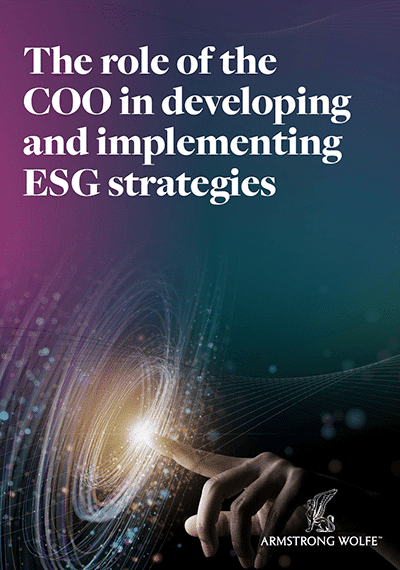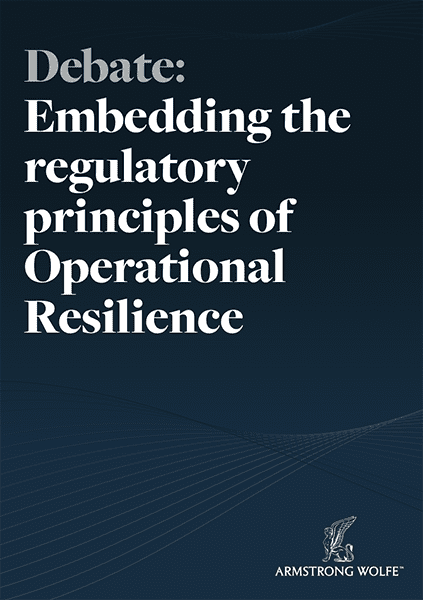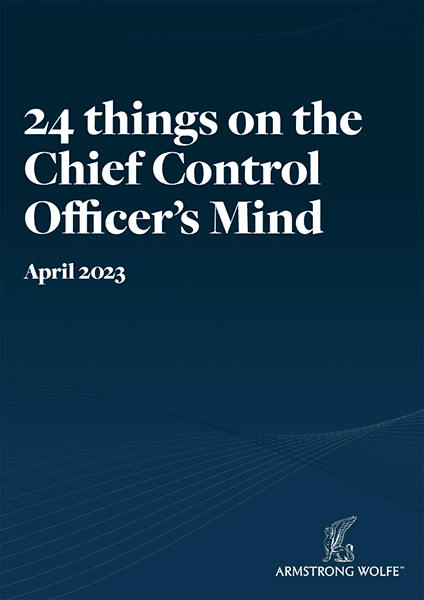2021 will be a parallel run to meet short-term needs whilst taking business to a new paradigm
A False Horizon
A vaccine has been developed, the end game is in sight, a return to normality is now a certainty. Expectations are high and suggested dates when we could be carried across the threshold of vaccination into normality vary from January 2021 to its spring or autumn and some less optimistic, year-end. There is understandable enthusiasm, mixed with hope and heightened expectations as this journey starts to unfold, but how many times have we thought we are 90 days away from victory and have set false horizons?
Let us face facts, be realistic, normality will not return until the end of 2021. Even with best efforts of the scientific community and then commerce to industrialise the production of a vaccine, and then treat the world, it will be a matter of many months if not years. In this context The World Health Organisation is coordinating global efforts to develop a vaccine, with an eye toward delivering two billion by the end of 2021. This is remarkable, as it typically takes 10 to 15 years to bring a vaccine to market; the fastest ever vaccine for mumps required four years in the 1960s.
What is important, therefore, is that the euphoria experienced in celebrating progress is married to pragmatism as to the time frames that will deliver change to present impasse.
The effort to bring a vaccine to market will produce results ahead of previous landmark interventions and inventions, but best estimates will take us to the end of 2021 for a meaningful intervention. In this time, bombastic soundbites, counters to scientific evidence, bravado or calls for back to work from corporate leaders will increasingly fall on deafened ears and lose the confidence of those they lead. It is important to remember it is not those in work that will most likely be badly affected, but they will be the passage and routeway by which the pandemic will continue to find its way to the vulnerable and the elderly.
To this end the COO, managing, determining, and executing the strategy and response to meet this challenge, will need to plan accordingly:
How to manage the business through a sustained period of dislocation and disruption
To design and move the business into a new paradigm post pandemic
This parallel effort will define the agenda and effort for the COO community in 2021. There will of course be time allocated to innovation, to business horizon scanning and the future, but the COO’s book of work will remain steadfastly committed and anchored to these two objectives.
The 2021 Agenda
Through its International COO Community membership (iCOOC), Armstrong Wolfe will provide regular peer group COO webinars, cluster calls and source and provide content to support this community. To direct our efforts, a recent survey of 50 front office global and regional COOs narrowed our attentions to six points:
1. Productivity – how to measure performance, appraise and reward in the new norm
2. Workforce Planning – what is the operating model for staffing post COVID?
3. Technology – how to tool staff to be more effective in a WFH environment?
4. Innovation – where and how can digitalisation be adopted to make short-term impact?
5. Operational Resilience – adapting to threats to withstand and adsorb disruptions
6. Supervisory – how to meet regulatory, client and emerging conduct risk demands?
“I really like the thought implied through all six questions shaping the COO’s agenda of taking full advantage of our disrupted lives to change the way we work for the long-term – the old adage of never wasting a good crisis.” (Global COO Capital Markets)
In addition, we will continue to support the dialogue on cultural cohesion and purpose, and analysis on how purpose is being changed by the intersection of the pandemic and the regulated and moral obligations of good conduct and sustainability. The skill set of a successful COO is an ability to connect and lead disparate parts of the organisation to cohesively address risks, issues, and opportunities. This could be a contingency situation (such as a pandemic), a regulatory requirement, design, and implementation of a new operating model, leveraging new technology capabilities for clients or the execution of an M&A transaction.We expect all of the above to appear on many COO agendas across the market I the next 12-24 months.
2021 – embracing the opportunities presented by a post COVID world
In Q1 2021, to support the COOs decision making, we will run 3 webinars, each meeting to address 2 of the points identified in the survey. We have interviewed some of our business advisers – experienced COOs in their own right – to provide some perspectives and pointers for framing the challenges ahead.
Webinar 1
Workforce Planning – what is the operating model for staffing post-Covid
The Hybrid, distributed workforce model is with us to stay. This means work must be managed across those who are fully or partially in a metro office, others who are fully or partially at home, those in offshore service centres and 3rd party vendor locations who are likely to be operating in a hybrid environment too.
Functions which seem to have coped well with remote working are the engineering and change management teams where an Agile model was already in place. The cadence and ceremonies support individual and team understanding of progress and provide a structured forum to resolve issues on a daily basis. Delivery is tangible. Metrics are clear. This success bodes well for the acceleration of the digital agenda which most firms are now prioritising.
However, even experienced Agile practitioners have had to battle the tendency to “over meet” which has been a common criticism across businesses during the pandemic. Maximising the value of a structured daily stand-up by stepping through progress on agreed work items seems to be one successful tactic, and then minimising further meetings that day enabling teams to get on with the work individually or in small groups.
The challenge now is to extend some or all of the practices and tools of the Agile paradigm to areas adjacent to technology or “change” functions and beyond – sprints, daily stand ups/scrums, retrospectives etc. – to see where they can legitimately benefit from the cadence, transparency and tooling.
Productivity – how to define, measure and improve performance in the new norm
A data- and metric-driven approach must be balanced with a supportive and empathetic management framework.
Roles, responsibilities, and expectations need to be even more clearly defined and measurable with instrumentation in the business process to be able to measure progress and performance fairly and transparently. An individual’s goals need to be obviously linked to the overarching objectives of their team and the broader business to feel they are contributing to the purpose of the organisation. Weekly 1-1 with managers is important. All these things will have been happening in the past to varying degrees – but they take on much higher significance in a distributed workforce model.
The recruitment and onboarding of new talent requires re-engineering – building in some ability for a face-toface meetings for new hires early on. “Buddy” systems are key in the early weeks and months for new hires to get a sense of culture, behavioural norms and how to get things done in the new institution.
Junior hires should be a particular area of focus. In the old world a new graduate trainee would sit with more experienced staff – not only to learn the specific skills and content required for the job but also to learn what it is like to work in a job and expectations on behaviour etc. All of this has to be replicated in a distributed workforce model for example, small group, socially distanced sessions for new hires with senior leaders, video training sessions given by senior leaders and pairing the junior staff with more senior experts for coaching and technical guidance.
The ability to attract and retain talent will depend on the management and coaching support, the tooling, the opportunity for development and a strong sense of identity with the purpose and culture of the organisation. All of this with a lot less direct contact.
Webinar 2
Operational Resilience – adapting to threats to withstand and adsorb disruptions
The operational resilience of market participants has been well tested – not just in the ability for large swathes of the operation to work remotely. There have been periods of intense volatility and high transaction volume for market participants and the market infrastructure providers to manage. Broadly speaking this has all gone well.
However, a geographically distributed workforce, with partial home and partial office working, presents further challenges to business contingency models. There will be a need to track locations people are working from. We have been very focused on pandemic response, but the terrorist threat has not gone away. So, when there is an explosion in a city centre, the firm needs to know precisely where people are working from to ensure their staff are safe, and then to understand whether there is sufficient capacity to continue critical business processes in that location or they need to be switched to other regions. This extends to service centres in low cost location and vendors.
In this context, the COO is in a position of visibility across the stakeholder spectrum whether internal (sales, trading, Ops, Tech, Finance, Compliance, HR etc) or external (clients, regulators and the broader marketplace) and understands the impact of issues across this landscape, and therefore how solutions will mitigate and enhance more broadly. This understanding of how the business components are connected internally and externally, is crucial in developing strategies to exit the pandemic mode into a post-COVID operating model.
Supervisory – how to meet regulatory, client and emerging conduct risk demands?
Firms must ensure conduct is in line with regulatory expectations, which will continue to evolve as industry working models change. Some areas of consideration:
• Policies on which roles can be executed remotely
• Revising the definitions and expectations of supervisory roles
• New tools and training to embed this
• Oversight of conduct remotely is difficult, but we are already seeing major firms sanctioning staff for use of messaging platforms
• Senior execs need to be trained and supported on the new technologies being deployed to the broader workforce to better understand risks and to role model good usage
• 3rd party vendor risk management and material outsourcing processes need to be enhanced for partners working in a hybrid model. Firms need to be clear what activities they are comfortable with partners executing from individual homes and which they are not – aligned to the institution’s internal policies. Then they will need to enhance monitoring capabilities to ensure compliance.
Boards will require evidence that all these new frameworks are well designed and effective, to be able to execute their duties. Regulators will demand the same. COOs will need to work out efficient ways to do this with the certainty that any data presented is substantiated.
Webinar 3
Technology – how to tool staff to be more effective in a WFH environment?
The tools which have become embedded in the technology firms and tech functions of institutions should be more widely pursued (linked to a broader adoption of Agile practices described above). Development teams are used to using the environments and tools which enable communication, shared understanding of work priorities and progress and collaboration through virtual white boarding (Slack, Teams, Symphony, Jira, Confluence, Miro etc).
The accelerated adoption of Cloud infrastructure provides known benefits in terms of cost, agility, capacity management and resilience. There could be further benefits in terms of adoption of 3rd party cloud/ SaaS/PaaS solutions. The Tech vendors are keen for their clients to migrate from “on premises” to cloud solutions as it creates a new opportunity to convince clients to take the solution “out of the box” and minimise costly customisation. There is value to the clients here too, in terms of ease of implementation, and longer term the ability for standardised processes to emerge across the market, supported by these platforms, which offer cost mutualisation or utility plays to reduce non-competitive operational costs for all participants.
But technology investment budgets are finite. The COO is commonly a key decision maker in the optimisation of spend across mandatory and discretionary demands on the business, seeking common solutions which deliver across both. All investment portfolios will need a rigorous review with incoming demands to accelerate digitalisation for clients and the workforce, more aggressive adoption of cloud solutions while still meeting the ongoing regulatory agenda and meeting cost reduction targets. All of these need to be delivered while ensuring the underpinning data and technology infrastructure is enhanced to support all of this – resilience, cybersecurity, data quality, lineage and privacy etc. No mean feat.
Innovation – where and how can digitalisation be adopted to make short-term impact?
Beyond the work we have described above on workforce productivity, the focus for innovation should be on clients. There are risks and opportunities with existing and new clients. Their organisations will be in a similar hybrid operating model. Sales and Relationship Managers will not have the full range of engagement opportunities they had in the past – dinners and face-to-face analyst meetings will be less frequent. Relationships with new clients will need to be built up remotely. This will require full utilisation of new technology solutions and training for front line staff to be adept at its use. Harvesting public and institutional data and applying AI to create targeted campaigns and measure efficacy will be important. But equally competitors will also have to maintain their existing relationships under the same constraints, creating opportunity to usurp incumbents.
Deployment of techniques which may be more familiar at the retail end of banks will be useful on the wholesale side in terms of smart, targeted digital marketing aimed at specific clients. Marketing and Sales will also need to promote their firm’s reputation for capability, agility, pricing etc. in the market to win business. A rigorous and prescriptive utilisation of cross-channel CRM systems to ensure the single view of a client is fully embedded is essential.
All touch points for the client will now need a digitalonly option. The complete client lifecycle will need to be assessed for upgrade. There are some excellent solutions available from the Fintech community which have matured nicely over the last couple of years. Interoperability is key here to enable a real “single view of the client” we described above. The COO is in a good position to really understand all these touch points from Sales, Coverage, Trading, Credit, Client Operations – and the tech and data connection points underpinning this.
More broadly, the ideation and initiation of new projects naturally need space for more cross-functional creativity and collaboration at the outset. This is hard to recreate in a remote or distributed model. Some ability to co-locate in a COVID-secure way (pre-vaccine rollout) would be ideal to facilitate the kind of creative combustion we are used to. It is hard to re-create on video those moments where people do talk over each other in a room as intensity around ideas builds around physical whiteboards.
2021 – an opportunity not for change but for transformation
The next 12 months offer a testing period, a unique mustering of challenges for the COO. Testing they may be but for those with the mindset and determination to make a difference this represents the ideal opportunity to demonstrate their art to upgrade, change and drive transformation.
Recently there has been discussion about the COO role being increasingly data driven. This becomes an imperative in a much more distributed workforce model. How do you bring together all of the required data accurately and at pace to evaluate performance of the business, identify and mitigate risks, ensure benefits of investment spending are being harvested, that regulatory and conduct requirements are being met?
A final note on a pandemic legacy – pace of decision making. The response to the pandemic has shown that large institutions could make significant decisions on a much shorter timescale than would be the norm in “peace time”. These decisions have paid off and should encourage businesses to avoid re-introducing stifling bureaucracy that hindered agility in the past. The COO can drive these with their understanding of how the business hangs together and where to draw on the right expertise to inform good, efficient risk balanced decision making.
Armstrong Wolfe has access to senior, experienced COO talent who could be leveraged in a part time or interim model to support management in developing these strategies and building coherent, executable plans to deliver on this increasingly complex agenda.
This article was produced by the Partners of AWP and supported by its business advisors.
For more information and/or to attend the planned Q1 webinars, contact


